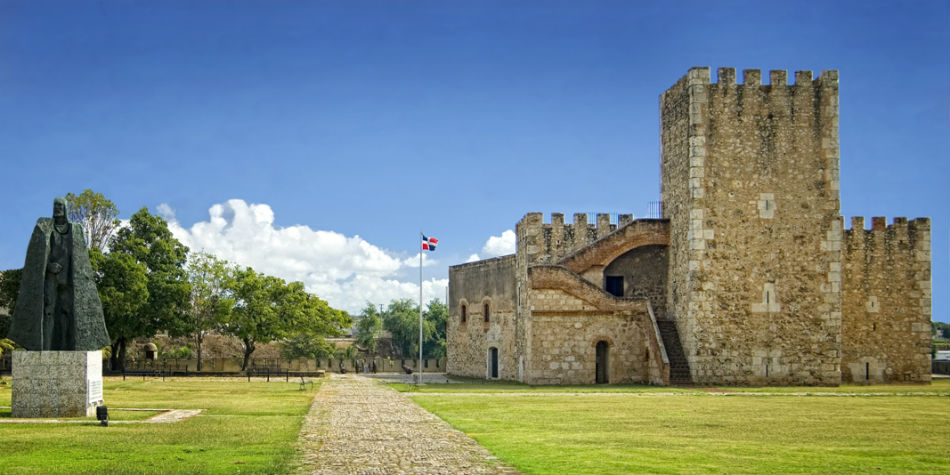Barbados is where rum was first distilled.

The Colonial City, founded in 1502 by the Spanish colonizers, is the oldest urban center in the city of Santo Domingo, capital of the Dominican Republic, and it was the first permanent European settlement in the Americas.
It is considered to be the most historical part, but at the same time the most romantic, it treasures important monastic ruins, door knockers, large windows present in museums, churches, shops, theatres, restaurants and parks.
In the Colonial City the first cathedral, the first paved street, the first monastery, the first hospital, the first university and the first military fortress in America are well preserved. Among the most significant buildings is the Alcazar de Colon, which represents a former witness of the colonial era in Santo Domingo, now the most visited museum in the Dominican Republic.
It was built on the cliffs overlooking the Ozama River and was completed around 1512 as the residence of Diego Columbus, son of Christopher Columbus, and his wife Maria de Toledo, niece of King Ferdinand of Spain.
There are also other imposing buildings such as the Palacio de la Real Audiencia, with a museum that reflects the colonial era, or the palatial residences of conquistadors such as NicolásOvando, Bastidas and even Hernán Cortés.
Also of interest in the Colonial City is the Larimar Museum, located in a 17th Century house, which shows the particularities of the blue semi-precious stone known as larimar, which is only found in the Dominican Republic.
The pedestrian street El Conde is lively with shops, sidewalk cafes and street art, and you can dine in one of the plazas illuminated with lanterns, while the Plaza de España, also called de la Hispanidad appears as an open space that receives events of all kinds throughout the year and is one of the meeting points for Dominicans in addition to the Parque Colón.
On the other hand, Las Damas Street gathers the best examples of architecture in the Colonial City.